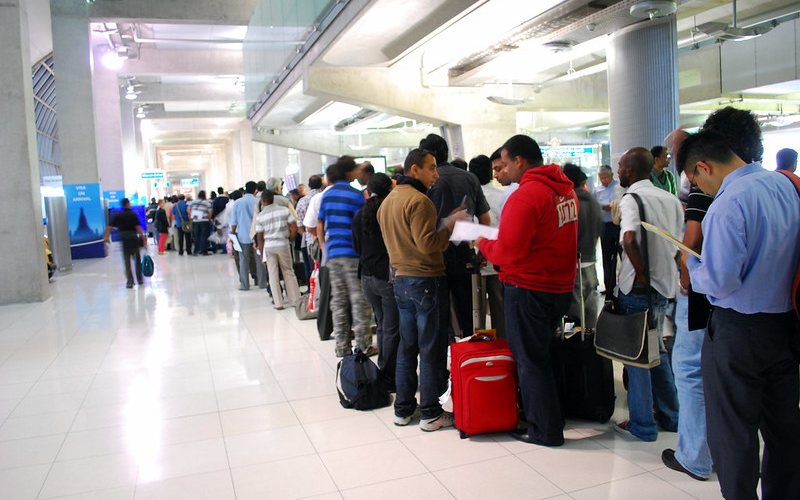Travelling has become conveniently accessible in the present world. Visiting destinations around the world has never been easier, thanks to significant improvements in international flight connectivity. The world has come closer and easier to explore because of this. However, most long-haul flights break their journey and have layovers in countries with better international flight connectivity. These can add a layer of complexities for the traveller with additional travel formalities. One important formality to remember during international travel is the transit visa. Suppose you are a long-haul traveller with India scheduled as a stopover destination at this crossroads. In that case, it is imminent that you know all about the Indian Transit Visa. Here’s a compact guide that gives a rundown on the most essential aspects of an Indian Transit visa.
Purpose of an Indian Transit Visa

So why do you require an Indian Transit Visa? Not just for India, be it any foreign destination, most travellers would require a visa to enter the foreign country, even for a brief time. Travellers are granted different visas based on why they are travelling be it for travel through a nation without the intention of remaining there for business, pleasure, education, immigration, or employment. Even if the nation is merely used as a hub for travel to another nation, the traveller needs to apply for a transit visa. Any foreign visitor who is qualified to apply for an Indian visa has to comply with the same visa regulations. To enter any Indian airport for a stopover and board a connecting flight to another location, foreign visitors must apply for an India Transit Visa. Before arriving in India, the traveller must apply for and have the Indian Embassy or Consulate approve the Indian Transit Visa.
Indian Transit Visa – Validity and Eligibility
Just like visiting countries with visa-free entry to Indian Passport holders, they need not apply for a transit visa. Similarly, foreigners from countries who have visa-exempt eligibility do not have to apply for an Indian Transit Visa. Though Indian Evisa types such as Indian tourist Evisa and Business Evisa are available, these cannot be considered by a foreigner staying in India for less than 24 hours. A traveller who does not have to disembark a flight on Indian soil or who does not have to leave the transit area can arrive at an Indian airport without a transit visa. The Indian Transit visa can be used for 15 days once it is issued, and the transit visa holder can remain in India for 3 days only. It can be issued on single or double-entry visas.
Requirements for applying for an Indian Transit Visa
The three important aspects of Indian transit visa requirements are the following:
- The applicant should have a valid passport
- A current visa for their onward destination from India is required.
- The applicant must carry a valid, confirmed ticket for the connecting flight to the onward destination
Apart from the passport, flight tickets, and visa for an onward travel destination, the traveler should also provide 2 passport-size photographs. The photographs must be as per Indian visa guidelines. For uploading the photograph, the digital specification should be adhered to. The applicant must submit an online transit visa application form without any error. The visa should be filled out completely, duly signed, and dated. The applicant should also absorb the cost of processing as a Transit visa fee. Until the Visa Transit fee has been paid, the application will not be regarded as submitted. The cost of your visa varies based on your nationality. Usually, within four working days of the necessary paperwork being submitted and the visa fee being paid, the transit visa is issued.
India Transit Visa – Common Queries Answered
You can get more clarity by going through these FAQs about Indian Transit Visa.
1. How long can I stay in India with a transit visa?
You can stay for a maximum of 3 days with an Indian Transit visa.
2. Can the validity of an Indian Transit Visa extended?
Usually, Transit Visas are issued for the layover period, which is usually short-duration stays. An Indian Transit Visa cannot be extended after it expires.
3. Can I get a Transit Visa at an airport in India?
No. That would not be possible. An Indian Transit Visa must be obtained before getting on the plane and reaching an Indian airport.
4. After the 15-day period has passed, can I still use my Transit Visa?
No, you only have 15 days from the date of issuance to finish your transit journey. You will need to reapply for a new Transit Visa for India if the 15 days have passed since the date of issuance.
5.Do I need an Indian Transit Visa to be eligible for a visa on arrival?
No, you do not need to apply for a Transit Visa for India if you can avail visa on arrival facility.
Conclusion
While travelling to another country is thrilling, it comes with a set of formalities and paperwork. This holds true for Indian Transit Visa as well. If you are passing through India on your way elsewhere, knowing how to get an Indian transit visa is crucial. It is a straightforward process when you know the basics. If you find the visa process overwhelming, contact an agency with expertise in India visas. They have the experience to guide you through the visa application process efficiently, ensuring the visa application is easy and stress-free.
Pankaj Rajpoot has extensive experience in the travel industry and has specialised in visa consulting. Along with being a keen writer, he has a wide range of interests and enjoys reading and travelling. He seeks inspiration by exploring new places, interacting with the local cultures, and nurturing his creative pursuits while doing so.